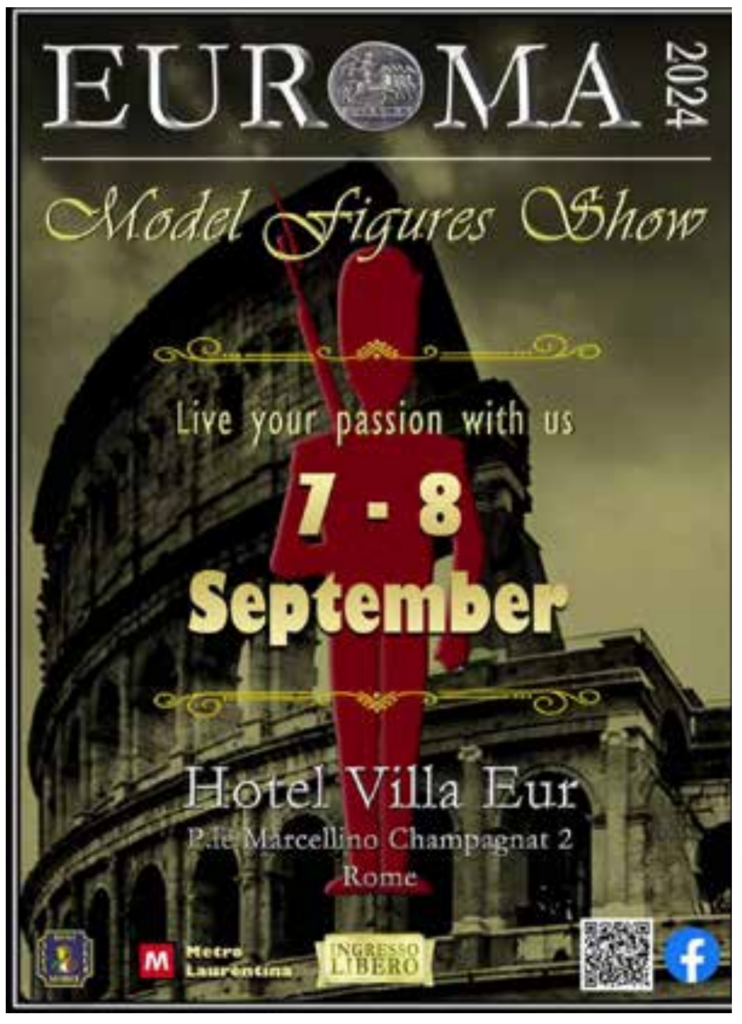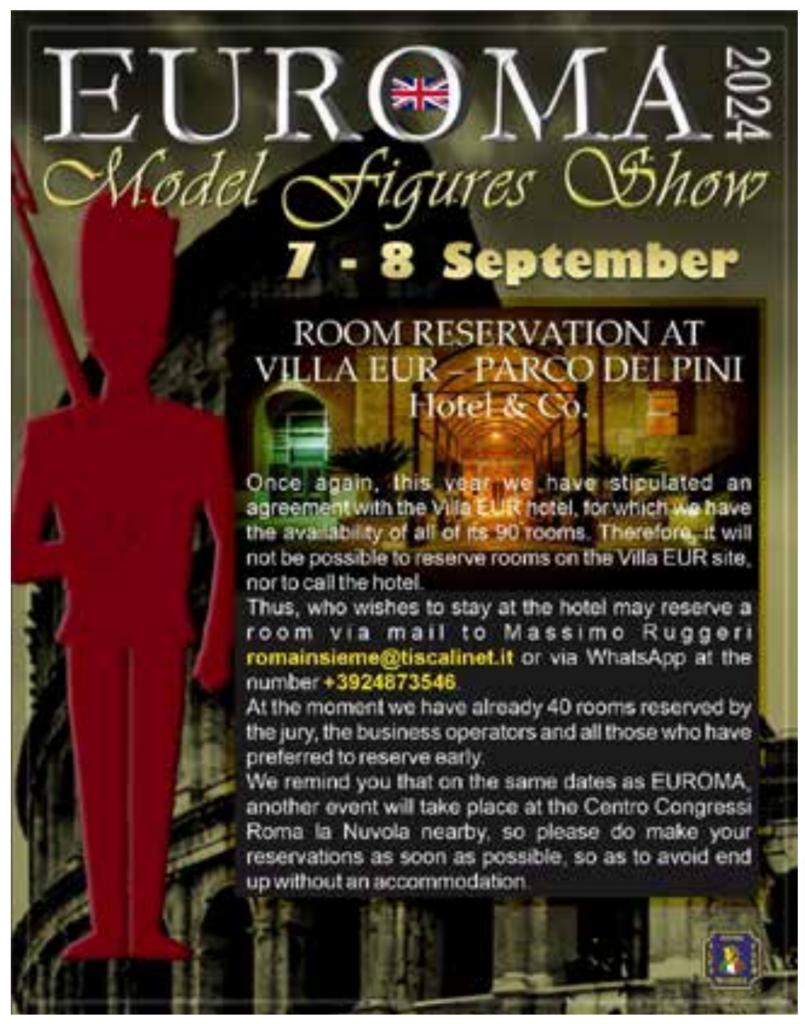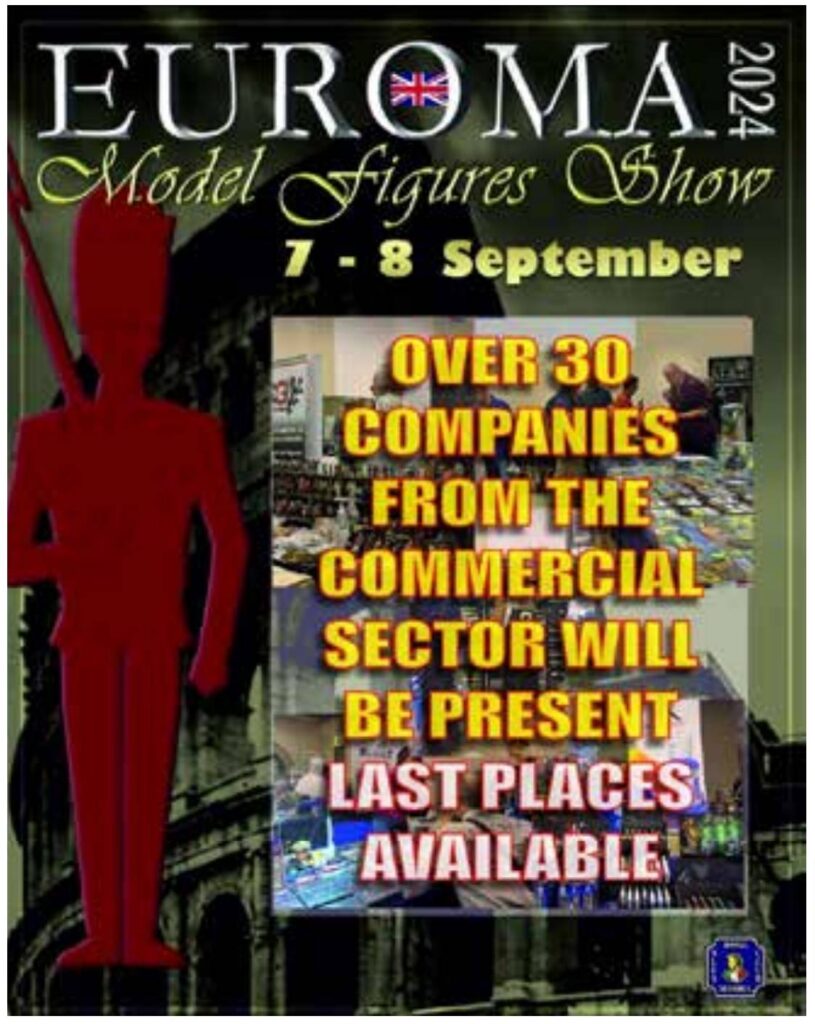Luigi Toiati responded to our request for help in identifying two large scale hollowcast figures in the last issue:
These are Spanish uniforms of the turn of 19th-20th century, probably Dragoons. I guess the brand might be Alymer, but it could be one of the thousand cottage manufacturers of the period. Hoping this could be useful,
Luigi.
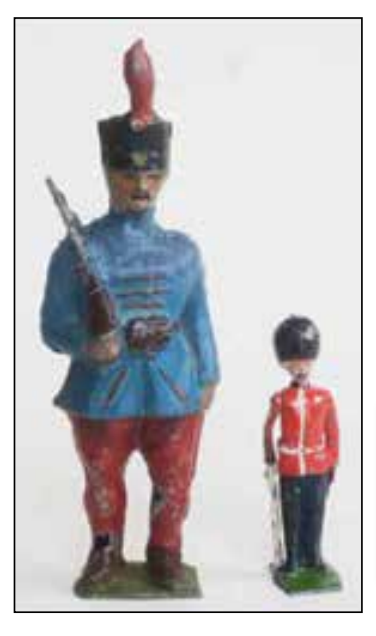
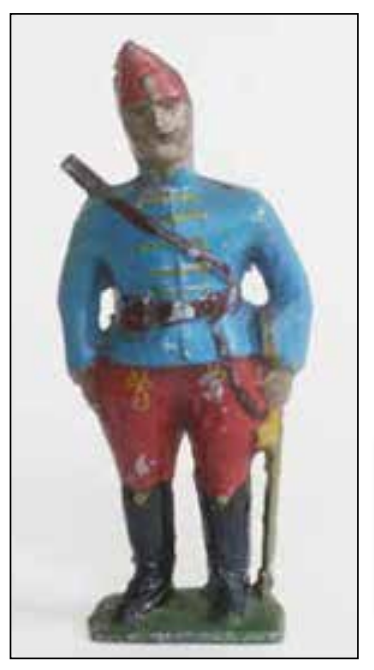
Has anyone else recognised these figures (see the previous issue for larger images!)?
Bill Nutting wrote in on two topics, first, in response to Will Beierwaltes piece on Feix:
Richard O’Brien used my picture of my Russian officer in his OTS No.2. Mine’s fixed arm. I know the figure very well, although I can’t put my hands on it at the moment. I’m very sure it’s a red herring to think it might be a moveable arm or that there might be a moveable arm version. There’s just a misunderstanding somewhere. It’s a fixed arm figure.
(Editor’s note: Bill also sent in a photo confirming that the figure is fixed arm.)
On the divvying up of figures I agree generally with the team on the split between German-made and American-made hollowcasts. I wouldn’t think that Feix would have made, marketed or sold sets like what I think are German-made artillery teams pictured, but I’ll take this as food for
thought.
I don’t remember ever seeing the gilt Feix figures before. That’s great! In turn I’m not sure we would count the foot cowboy as Feix. On the cowboy I’d defer to Kent Kline. He’s seen more figures than anyone else I’d think.
I’m sceptical of the idea that the helmeted blue over red soldiers are Spanish as opposed to a generic figure or enemy, but I appreciate the idea. If we can find some good contemporary illustrations, I’ll tip my hat.
This did get me thinking differently about when the Feix soldiers were first made. Thinking broadly, I would think that the earliest helmeted figures would have been released before the Spanish-American War. I would think that the Montana hat figures would have been released during the war in 1898. I would think that soldier makers wouldn’t have released a new helmeted figure after the Spanish-American War. I’m just thinking out loud, using James Opie’s ICP (Inherent Commercial Probability). One thing I do know is that we don’t need to make too much of the earliest Feix ad in Playthings magazine – in 1903. The main reason the earliest ad is from 1903 is that this is the first year Playthings was published!
Looking at the Fall 2023 bases in Figure 13, I’ll note that the real or most important Eureka base is the fully round base with prongs to be twisted into a locked position on the stand-up board. On the Britains bases we think the important figures are the ones dated 15.6.1906. The statement that “[in] 1909 Eureka went completely to rectangular bases to fit in their new target game hinges” is off in a couple ways and by a number of years. Basically, we should be thinking of Eureka as just the earliest iteration with the fixed stand-up display and the usually fully round bases. After just this earliest period as Eureka, Beiser transitioned to American Soldier Company.
In the Winter 2024 piece there’s a misstatement about Eureka being “New Jersey-based.” It should be Brooklyn of course.
In the Fall 2023 there’s another miss on McLoughlin. Not “McGloughlin.” I’d say that’s worth a correction in the PDF online.
Bill also wrote in regarding the Paper Soldiers that featured on our last cover:
Saw the paper soldiers on the cover of Spring 2024. My first reaction was that this was just a random sample out of the thousands of paper soldiers out there. But I took your prompt and looked up the maker in Edward Ryan’s Paper Soldiers.
Edward pictures another set in the series – Spahis Algeriens. Looks like there were 12 different units in the series. He lists the publisher at Librairie Théodore Lefèvre et Cie, with Emile Guérin, éditeur.
Edward’s description captures the dramatic presentation of the soldiers – as a huge strip 42 ½” x 8” – with the figures probably 6” high as you note.
Edward’s concluding note is also powerful: “ The quality of the figures, both in terms of the accuracy with which the uniforms are depicted and excellence of the design and color lithography, is so exceptional as to make them, in my opinion, among the finest paper solders ever published.” I know my longtime friend Edward had a great depth of knowledge and a keen eye. Apparently you do too!
Here are some images of part of the set of Spahis pictured in Ryan’s book. They truly are magnificent figures. Look out for a more detailed analysis of this series by Russ Bednarek.

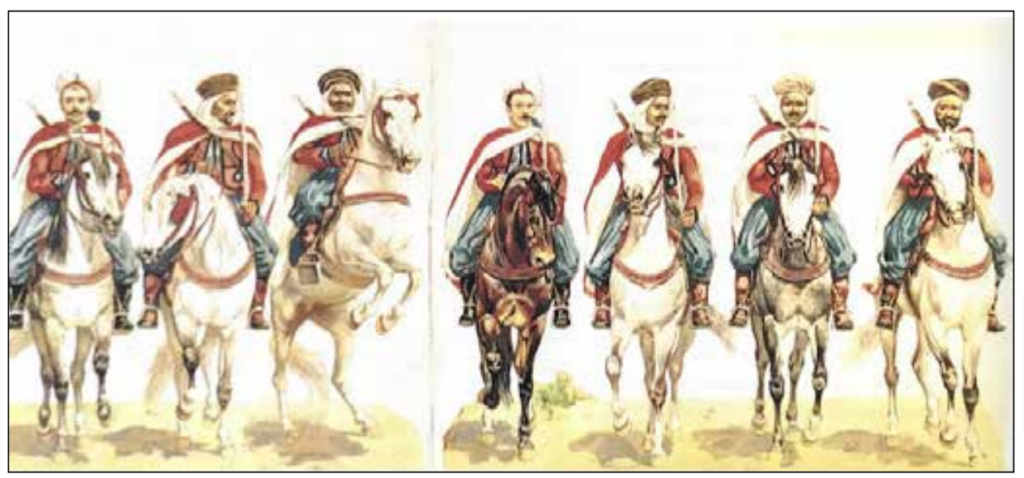
Gisbert Freber – Some while ago I posted in Zinnlaube magazine (Volume 8) a question about an interesting Zulu figure I had discovered. This was semi-ronde but in 54mm scale. A splendid piece of sculpting as you can see from the accompanying images.
Gisbert Freber was kind enough to answer my request in a subsequent issue of Zinnlaube, suggesting that it was made by Krause of Gotha because of a similar shield found on a larger scale figure that has definitely been attributed to that company. Recently he came back to me with a further response:
“I am just back from my motorcycle trip to Switzerland and Italy. I met Francesco Marchiandi in Turin and saw his collection. He is reorganizing it but was able to show me some things, including a box with identical Zulus and I remembered the figure from you. It is interesting, because we found out that the maker is Friedrich Ammon and that your figure is slightly different. The weapon in your figure is different.”
Gisbert sent a picture showing one Zulu armed with bayoneted rifle (probably captured from an unfortunate British soldier!) while the second was armed with the more usual assegai or spear. Gisbert also told me that Francesco will write an article later for OTS. So, we look forward to seeing that in due course.

Francesco Marchiandi has also been in touch on another matter. He enjoyed reading Bill Anderson’s article about Italy’s campaign in Ethiopia in the Spring 2024 issue of the magazine (48: 1).
“I would like to point out an error regarding the uniforms at the beginning of the article “The unclaimed colony”. While the colonial Italian on the left is correct, on the contrary, the one on the right is not an “Ethiopian tribesmen”! He is a soldier belonging to the Italian groups called “Dubat”; they were of Somali origin and part of the Italian colonial army, initially established in 1924 to defend and counteract marauding gangs etc. at the borders. The officers were Italian, the non-commissioned officers were Somali or Yemeni. Among other things, they were also protagonists in the border incident of Ual Ual on 5 December 1934, against the Abyssinian troops who were trying to reconquer part of the territories they claimed. This bloody incident was used many months later as a pretext to start the war.”
Francesco also sent in the following images of Italian troops embarking for Abyssinia.
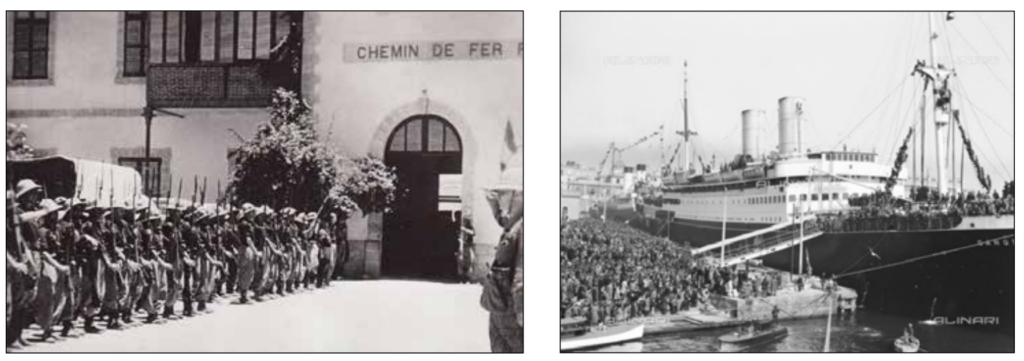
Francesco has also written in to inform us that later this year the EUROMA 2024 event will take place on the 7th and 8th September, and that, as I already wrote in last October, it will be dedicated solely to figures/soldiers and so-called fantasy.
There will be a competition for models and model dioramas and about forty trading tables for buying and selling toy soldiers and accessories.
I attach the posters relating to the event and for any reservation in the same hotel as the event etc. The
location is always the same.
